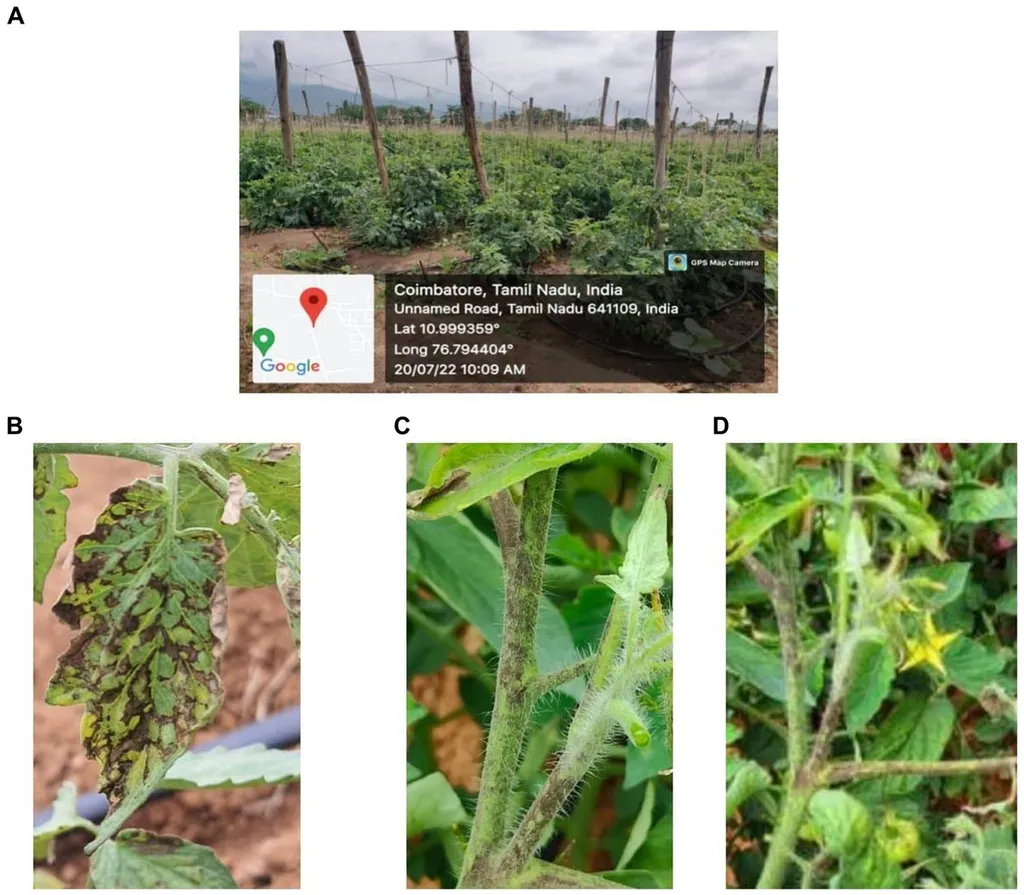In the heart of Tamil Nadu, India, a groundbreaking study led by R. Sharanya from the Department of Plant Pathology at Tamil Nadu Agricultural University is reshaping the way we think about crop protection and plant growth promotion. The research, published in the Journal of Virology (Virology Journal), focuses on the antiviral potential of bacterial endophytes against the devastating groundnut bud necrosis virus (GBNV) in tomato plants, offering a promising solution to a longstanding agricultural challenge.
Tomatoes are a staple crop worldwide, but their productivity is often hampered by GBNV, which can lead to significant yield losses. Traditional methods of controlling this virus have relied heavily on insecticides to manage the vector populations that spread the disease. However, these methods can be costly, environmentally damaging, and sometimes ineffective. Sharanya’s research introduces a novel approach: using bacterial endophytes—beneficial bacteria that live inside plants—to boost plant immunity and suppress viral infections.
The study identified four bacterial endophytes—Brucella melitensis CNEB54, Bacillus licheniformis CNEB4, Bacillus velezensis CNEB26, and Bacillus vallismortis BAVE5—that showed remarkable promise. These bacteria not only delayed the development of GBNV symptoms but also significantly reduced the virus’s titer and copy numbers in infected plants. “The reduction in virus titer and copy numbers is a game-changer,” Sharanya explains. “It means these bacteria are not just masking symptoms; they’re actively fighting the virus at a molecular level.”
The impact of these endophytes extends beyond virus suppression. Field experiments demonstrated that plants treated with B. melitensis and B. velezensis exhibited enhanced growth, with taller plants, more flowers, and heavier fruit yields compared to untreated controls. “The growth promotion aspect is equally exciting,” Sharanya adds. “It shows that these bacteria can improve overall crop productivity, making them a valuable tool for sustainable agriculture.”
The commercial implications of this research are substantial. For the agricultural sector, the use of bacterial endophytes could reduce the need for chemical insecticides, lowering production costs and environmental impact. It could also lead to higher yields and better-quality produce, benefiting farmers and consumers alike. “This is a win-win situation,” Sharanya notes. “Farmers get a more effective and sustainable way to protect their crops, and consumers get healthier, more abundant food.”
Looking ahead, this research could pave the way for similar studies on other crops and viruses. The potential to harness the power of beneficial bacteria for plant protection and growth promotion is vast, and the agricultural community is taking notice. As Sharanya puts it, “This is just the beginning. The possibilities are endless, and the future of sustainable agriculture looks brighter than ever.”
In a field where innovation is key, Sharanya’s work stands out as a beacon of hope for a more sustainable and productive future. With the publication of this study in the Journal of Virology, the scientific community is one step closer to unlocking the full potential of bacterial endophytes in agriculture.

